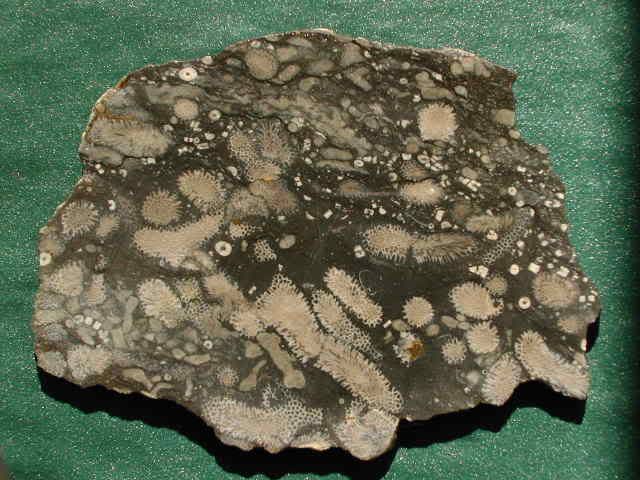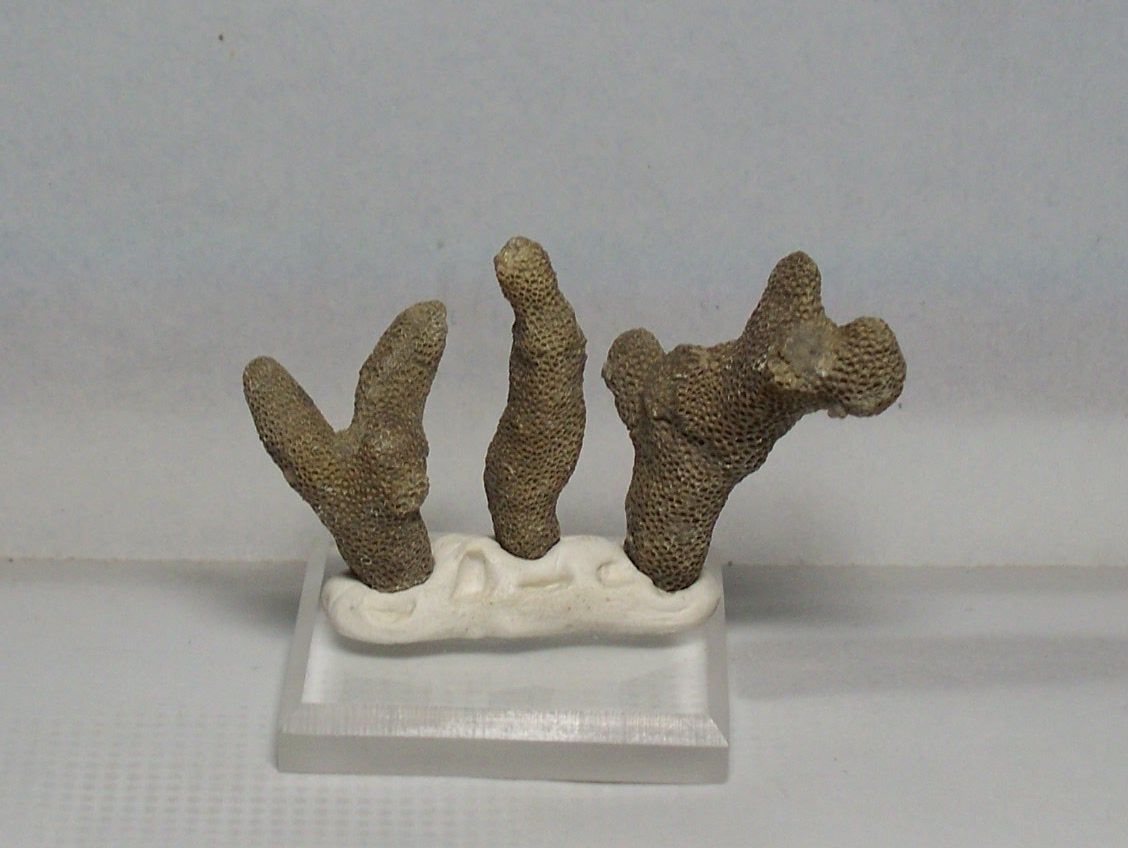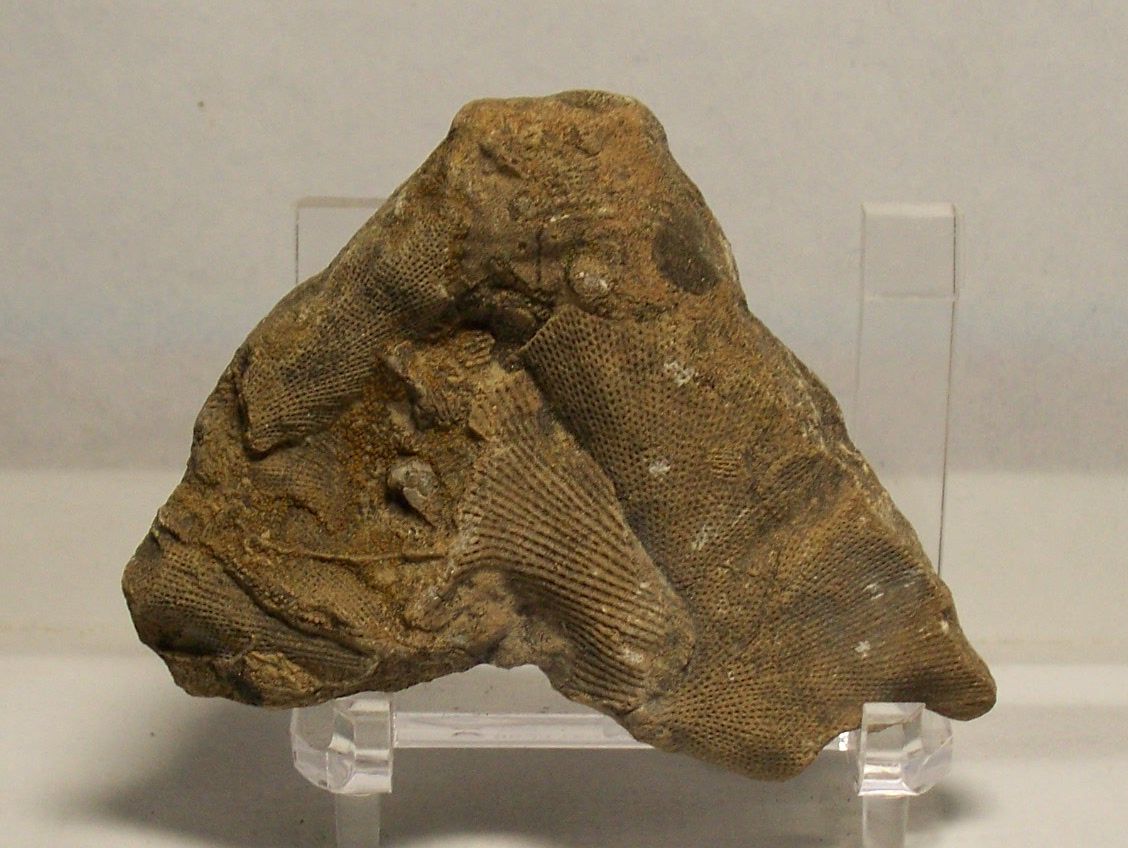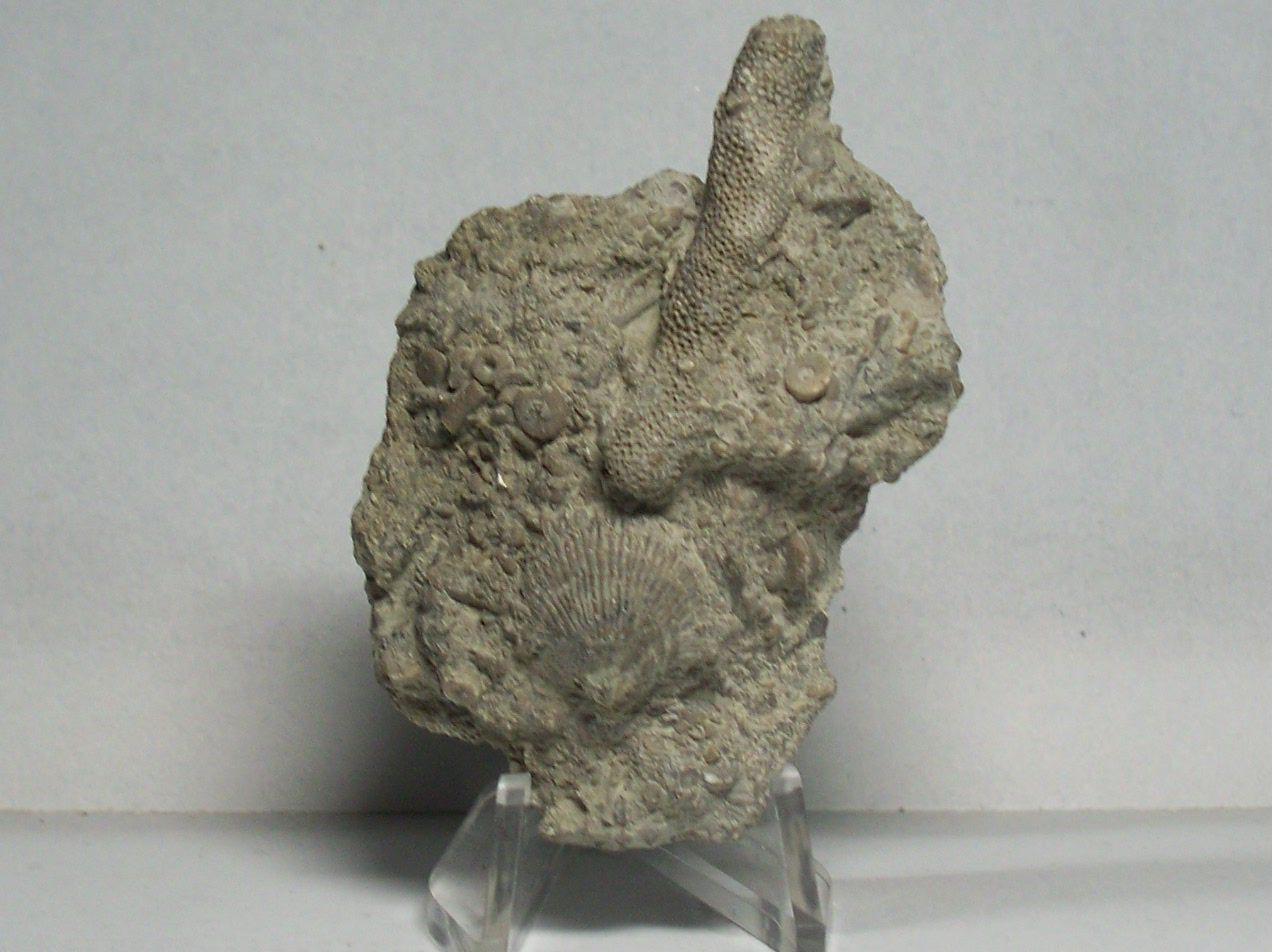jamesp
Cave Dweller 
Member since October 2012
Posts: 36,601
|
Post by jamesp on Mar 2, 2014 7:13:56 GMT -5
Was hoping to see some better fossil records of Bryozoan fossils than these. Bryozoans are often of tissue or unlike coral, delicate carbonate skeletons and are not to hip on becoming fossils. These are from the McBean Formation. Also known as Savannah River agate. An attractive version of coastal plain chert. Eight Bryozoans were discovered in this formation, which is a lot for this creature. Makes fine cabs and tumbles too. Apparently the location of the Savannah River cove served as a spot covered in an ancient ocean. These Bryozoans were captured in silica at the beach(fall)line around Girard Ga. Screen magnification about 25X        Macro photos shot from these tumbled chips collected from a pile of native man's heat treated chip debris(most likely). Pottery and broken points found in same spot.    Check out cross section of critter in upper right corner-typical Bryozoan shape     |
|
Sabre52
Cave Dweller  Me and my gal, Rosie
Me and my gal, Rosie
Member since August 2005
Posts: 20,492
|
Post by Sabre52 on Mar 2, 2014 10:25:07 GMT -5
I think these are fossil bryozoans in limestone from out by Baker, CA......Mel  |
|
jamesp
Cave Dweller 
Member since October 2012
Posts: 36,601
|
Post by jamesp on Mar 2, 2014 10:34:06 GMT -5
I think these are fossil bryozoans in limestone from out by Baker, CA......Mel Much better.That tells me a whole lot about the ones in the Savannah stuff. Those look classic Bryozoan all the way. I think Jean finds Bryozoans around her area. |
|
Mark K
Cave Dweller 
Member since April 2012
Posts: 2,816 
|
Post by Mark K on Mar 2, 2014 23:20:39 GMT -5
I could produce tons of bryozoan fossils from here. They are not agatized like your though. They are Ordovician.
|
|
jollyrockhound
spending too much on rocks
 
Member since March 2013
Posts: 409
|
Post by jollyrockhound on Mar 2, 2014 23:24:02 GMT -5
Would have never known on those first picts!
|
|
jamesp
Cave Dweller 
Member since October 2012
Posts: 36,601
|
Post by jamesp on Mar 3, 2014 7:43:46 GMT -5
I could produce tons of bryozoan fossils from here. They are not agatized like your though. They are Ordovician. I think they discovered the new ones in the limestone in the area foxtail, and not the silicifications. Like Mel's slab, way better preservation. |
|
jamesp
Cave Dweller 
Member since October 2012
Posts: 36,601
|
Post by jamesp on Mar 3, 2014 7:45:42 GMT -5
Would have never known on those first picts! Used to collect that colorful stuff 30 years ago jolly and knew it was full of preserved 'somethings'. Joined this forum and finally found out what they were. |
|
|
|
Post by pghram on Mar 3, 2014 9:46:08 GMT -5
Polished fossils are cool!
Rich
|
|
|
|
Post by Pat on Mar 3, 2014 14:29:26 GMT -5
Those are lovely! I need to take my magnifying glass and look harder at my petrified swamp goo and stromatolites.
|
|
Sabre52
Cave Dweller  Me and my gal, Rosie
Me and my gal, Rosie
Member since August 2005
Posts: 20,492
|
Post by Sabre52 on Mar 3, 2014 15:33:09 GMT -5
Was looking through my pics. I think these are bryozoans in flint from La Grange, Texas....Mel  |
|
|
|
Post by gingerkid on Mar 3, 2014 15:50:44 GMT -5
Beautiful macro shots, James.
Love your specimens, Mel. Really like the first one.
|
|
Mark K
Cave Dweller 
Member since April 2012
Posts: 2,816 
|
Post by Mark K on Mar 5, 2014 15:41:31 GMT -5
I could produce tons of bryozoan fossils from here. They are not agatized like your though. They are Ordovician. I think they discovered the new ones in the limestone in the area foxtail, and not the silicifications. Like Mel's slab, way better preservation. I do not understand what you said. It reads to me like I have had a stroke. For some reason I am not connecting the pieces. |
|
jamesp
Cave Dweller 
Member since October 2012
Posts: 36,601
|
Post by jamesp on Mar 5, 2014 15:55:50 GMT -5
I think they discovered the new ones in the limestone in the area foxtail, and not the silicifications. Like Mel's slab, way better preservation. I do not understand what you said. It reads to me like I have had a stroke. For some reason I am not connecting the pieces. Sorry foxtail. Georgia grammer. Was saying that fossilized bryozoans were discovered in the McBean formation here in east Georgia. They discovered 8 new ones. But they were discovered in limestone, not int the silicified material. I guess the limestone had done a better job of preservation. And the silicified stuff did not preserve so well. |
|
|
|
Post by Jugglerguy on Mar 5, 2014 16:20:54 GMT -5
|
|
|
|
Post by jakesrocks on Mar 5, 2014 16:59:38 GMT -5
Here's one from my collection. I'll check and see if I have more pics.-- Rugose Bryozoan.  Found another.  Both are from the Potter Farm formation, Michigan. And another showing the Rugose Bryozoan still in a soft matrix death plate.  |
|
|
|
Post by Jugglerguy on Mar 5, 2014 17:12:38 GMT -5
Yep, those look familiar. What's the difference between bryozoans and corals?
|
|
|
|
Post by jakesrocks on Mar 5, 2014 17:24:54 GMT -5
|
|
|
|
Post by Jugglerguy on Mar 5, 2014 17:32:14 GMT -5
Thanks Don.
|
|
Sabre52
Cave Dweller  Me and my gal, Rosie
Me and my gal, Rosie
Member since August 2005
Posts: 20,492
|
Post by Sabre52 on Mar 5, 2014 20:04:00 GMT -5
*L* Truthfully, I'm not a paleo guy so those may very well be corals. To me, many corals and rugose bryozoans look a lot alike in cross section. I really never looked up the stuff in my slab. A fossil guy told me what they were. I tried looking up Cladopora in all the fossil books I have and Index Fossils of Texas is the only one with Cladopora that are sort of branched and to me they look almost identical to Bryozoans of similar form so I'll bow to your superior knowledge....Mel
|
|
|
|
Post by Jugglerguy on Mar 5, 2014 20:08:47 GMT -5
Mel, I think you misunderstood. I don't know much at all. My comment was more of a question. On the subject of biology, I think you are the guy with superior knowledge!
|
|






































